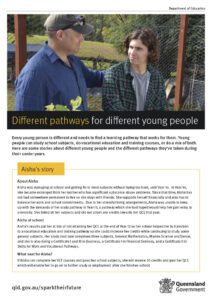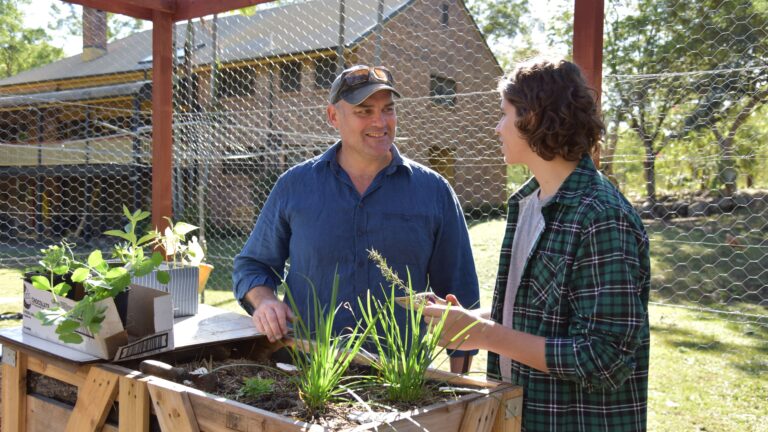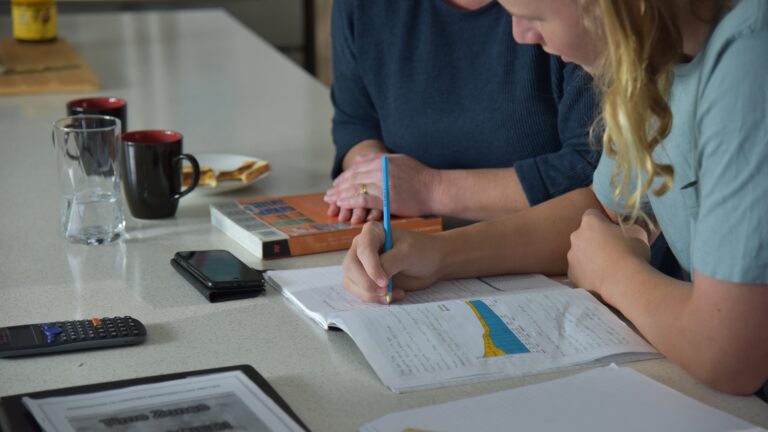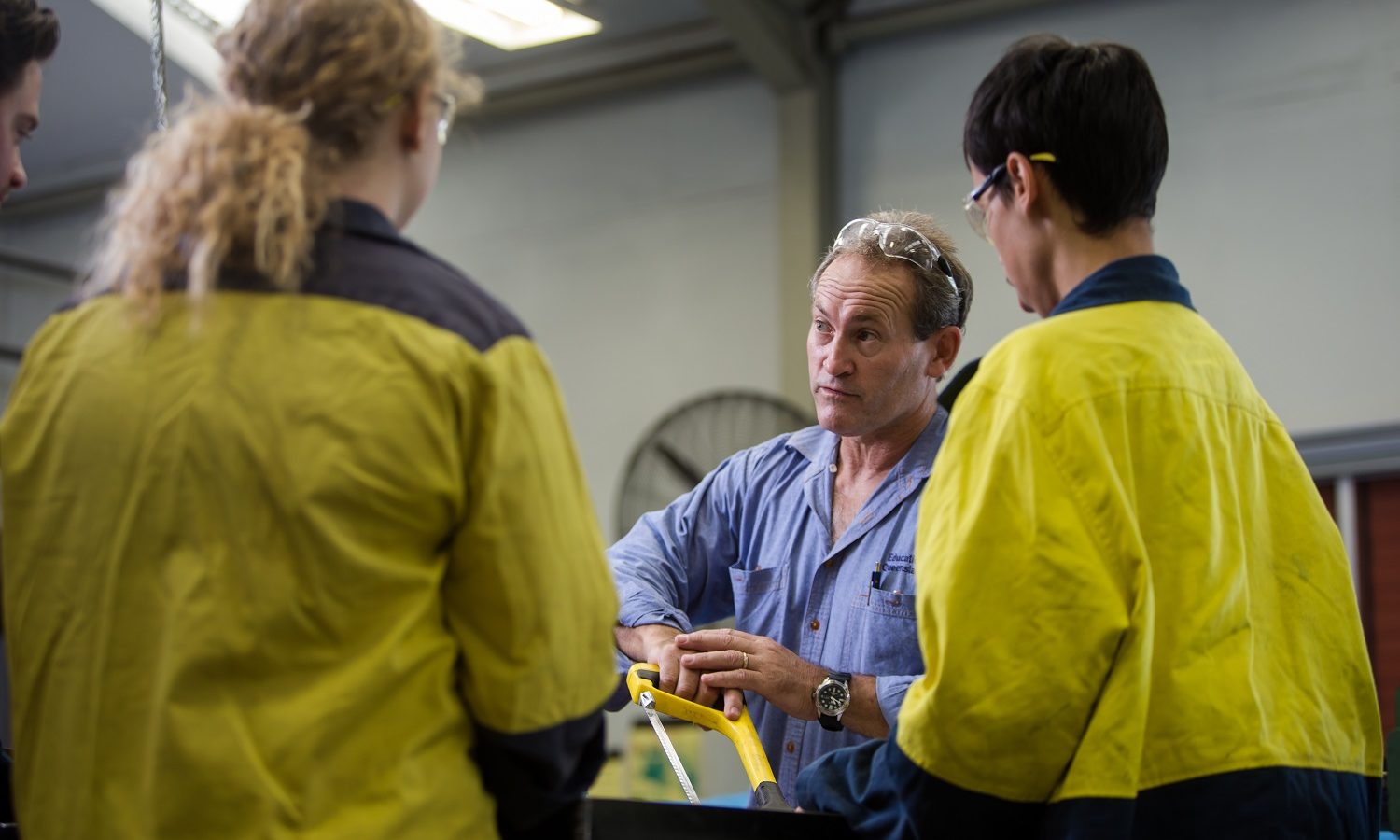Key Points
- The Queensland Certificate of Education (QCE) is awarded at the end of Year 12 to students who complete enough training.
- Students need to earn at least 20 points to get the certificate.
- Students can earn points towards their QCE when they do vocational education and training (VET) courses at school.
- VET courses give students hands-on work skills and experience.
- Students can study VET at school in Years 10, 11 and 12.
Studying vocational education and training (VET) is a great way for young people to gain hands-on work skills and experience that can set them up for success in many different occupations. Students can study VET at school and gain credits towards their Queensland Certificate of Education (QCE), awarded by the Queensland Curriculum and Assessment Authority to students who complete enough learning by the end of Year 12. With 96.5 per cent of Queensland students achieving a QCE or Queensland Certificate of Individual Achievement in 2019, many employers expect young people to hold this certification. Here’s four things you can do to help your teen decide if doing VET at school is the right pathway for them to achieve their QCE.
1. Understand the possibilities
VET courses at school can give students hands-on experience of the world of work and help set them up for success when they leave school. Students can study courses in a range of industries including administration, retail, tourism and hospitality, community services and health, transport, technology, construction, utilities, mining and manufacturing. Each level of a VET qualification is worth a different number of credits towards a QCE. For example:
- The maximum number of credits possible for completing a Certificate II is 4.
- For a Certificate III or IV, students can earn between 5 and 8 credits depending on the number of recommended hours of learning they complete.
- For school-based apprenticeships, the maximum credit available is 6.
- For school-based traineeships, the maximum credit available is 8.
The number of credits a student earns towards their QCE when studying a VET course depends on the skills they learn and the hours they complete before they finish Year 12. Read the list of QCE credits and requirements for different VET courses.
2. Recognise the benefits
VET prepares students for work through practical learning. Around 60 per cent of Queensland senior students achieve VET qualifications. Some of the most popular courses are business, information and communication technology, hospitality, construction, fitness, and sport and recreation. Studying a VET course at school allows students to:
- develop hands-on, work-related skills that can help make them more employable when they leave school
- access learning opportunities that suit young people with more practical learning styles
- achieve nationally recognised qualifications that industries are looking for
- follow learning pathways that can take them on to further training, work or university.
VET isn’t for everyone so it’s important your teen considers all their options before making a decision about their learning pathway.
3. Consider the options
Students can learn workplace skills for many different occupations through studying VET courses while earning points towards their QCE. Students can receive their training at school if their school is registered to deliver the training or from an outside training organisation.
School-based apprenticeships and traineeships
Teens can start an apprenticeship or traineeship while they are still at school, generally in Years 10, 11 or 12, while studying for their QCE. There are more options than you think with apprenticeships and traineeships available in many industries including aviation, beauty, health, tourism and travel, telecommunications, library and museum services, printing and graphic arts, conservation and land management, business, boating and marine, and real estate and property management. Students who do a school-based apprenticeship or traineeship can:
- study at school and get on-the-job experience while being trained and working towards a qualification in a trade (apprenticeship) or occupation (traineeship)
- be trained in trades like electrical, plumbing, cabinet-making or automotive and industries like business administration, information technology and tourism
- gain skills towards a nationally recognised qualification (Certificate II, III, or higher)
- have the chance to build a relationship with a potential employer for when they leave school
- gain skills and experience to help them go on to university down the track.
Certificate courses
Students who study a VET course while still at school can:
- earn a nationally recognised qualification from Certificate I up to Certificate III
- study areas such as health, hospitality, horticulture, community services or engineering
- receive their training at school if their school is registered to deliver the training, or from an outside training organisation
- gain skills and experience to help them go on to university down the track.
A combination of VET and school subjects
Your teen doesn’t have to do either a VET course or school subjects – they can combine both and keep their options open. Talk to your child’s school to come up with a learning pathway that works for your child and read these stories to learn more about the different learning pathways young people can take in their senior years.
4. Talk to the school
The school guidance officer, along with your teen’s teachers and support staff, can help you and your teen understand the different VET pathways available at the school. In Year 10, the team at your child’s school will work with you and your teen on their Senior Education and Training Plan (or ‘SET plan’ for short). This process is the ideal time to explore the different learning pathways available for your teen to study during their senior years. School websites also have information about the VET courses they offer. To make the most of your conversation with your teen’s school, do some research before you contact the school and write down the questions you’d like to ask.

Students with individual learning needs
If your child has a disability or additional learning needs, schools can make adjustments to suit your child’s needs and support them in continuing to learn alongside their friends of the same age. Speak to your child’s school about the kinds of adjustments the school can make to support your teen and also what you and your teen should consider when deciding on the best pathway for your teen in the senior years. For some of you, the Autism Hub and Reading and Writing Centre may be a useful place to gather information to help you support your child’s learning. At the end of Year 12, students on individualised learning programs receive a Queensland Certificate of Individual Achievement (QCIA) which is an official record that students have completed at least 12 years of education and provides a summary of their skills and knowledge they can present to employers and training providers.
Download tip sheet: Different pathways for different young people
Last Updated: 22 February 2024






